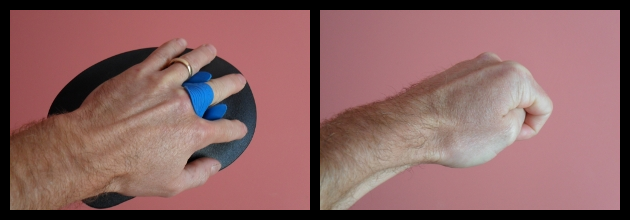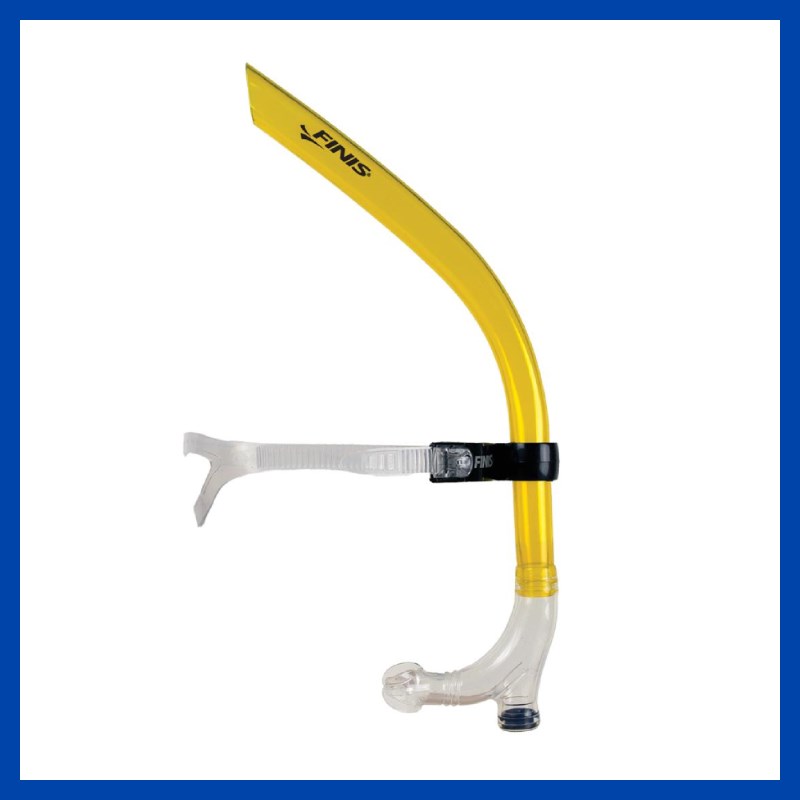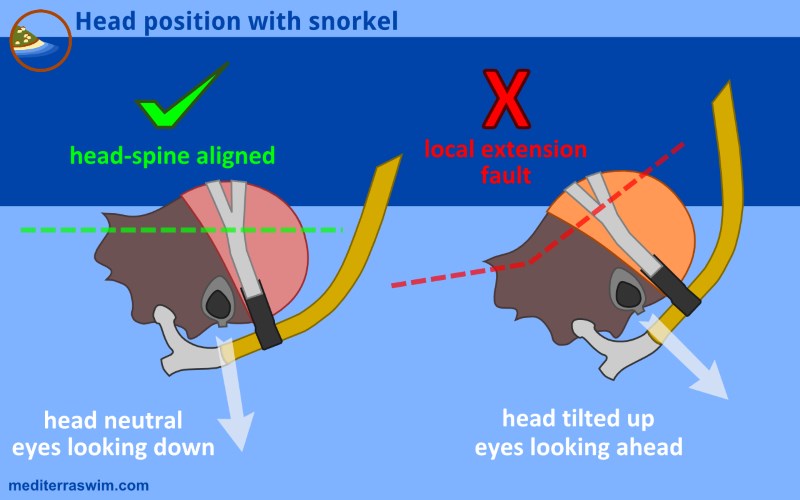Training devices are extremely popular among swimmers and triathletes – with new fads coming each year – and people are looking to their coach to have an opinion on these. Unfortunately, very few can offer explanation beyond the product’s marketing hype to back their opinion with substantial logic or sound scientific explanation.
But with any training device, if you understand what the tool can help you with, what it’s role in the skill-development process is, and what it’s liabilities are, then you are in a better position to choose when to use it or not.
These considerations apply to various swim training tools you see others using or might consider using for yourself like snorkels, fins, paddles, boards, etc. Rather than give you unqualified encouragement to use anything you see, I want to urge you to think critically about the device’s stated purpose (think past the marketing surrounding it), then seek out some understanding or guidance on how you’ll get the best benefit out of it, according to your particular needs and goals.
To help in moving beyond that marketing hype and chaos of opinion, let me share some general guideline I use that may help you also when thinking about using any swim training device.
Enhance Skill, Rather Than Replace It
An overarching principle is to use devices that provoke your own brain and body to get stronger, smarter, to increase it’s skill in perception and control, to ultimately do better without the device. This is in contrast to using a device that overrides and replaces your skill, ultimately making your own brain and body less capable without that device.
Example
Using a Tempo Trainer to train your brain to execute the stroke choreography with precision, within a fixed time interval, is powerful. But eventually, you need to train in such a way to imprint that sense of tempo into the brain and wean yourself off the Tempo Trainer so that it is no longer necessary.
Improve Attention
The device should help you turn away from distractions so you can devote better attention to work on some part of your body or stroke. If you have two skills that need work, but you cannot easily work on both at the same time, an assisting device may allow you to set aside concern for one of them while you focus on the other.
Example
A swimmer snorkel can allow you to turn off the need to turn to breath so that you take more consecutive strokes without interruption.
A swimmer may use a Tempo Trainer to draw attention to a particular moment of the stroke that is timed to the BEEP.
In contrast, a waterproof MP3 player could be loaded with songs that keep your stroke moving at certain desired tempos. While it could also cause you to tune out of what’s happening in your stroke, allowing you to tolerate inferior movement patterns, less than your best.
No Interference
While working on one particular skill that device should does not interfere with another critical piece of the stroke that your skill project is dependent on.
Example
A pull buoy is most commonly used to lift up sinking hips, so the swimmer can enjoy swimming parallel to the surface. But the skill of swimming parallel to the surface requires that the swimmer build a tensile frame through core of the body (including the pelvis and thighs) and then send water flowing under this frame to give it lift. But a pull buoy artificially supports and replaces the core’s role causing it to collapse and disconnect from the front of the body. Whatever patterns the swimmer is training with the upper body while pulling with a buoy is not disconnected from its essential relationship to the core. There is virtually no situation I can think of where this is a good idea in the long-view of swimmer development.
Swimmer fins can be useful temporarily to allow the swimmer to focus on the upper half of the stroke, moving in slow-motion, carefully etching the movement patterns, while the fins, moving gently, provide some lift to the legs. Or while in streamline position, one can stay in streamline position with flow of water along the body line offering feedback on how well he is reducing drag with each adjustment in shape. With fins, unlike the pull buoy, while still providing some lift to the lower body, they still allow if not urge the swimmer to engage the core to self-support the middle zone of the body.
No New Problems
In helping solve one skill problem, the device should not create a new problem or bad habit that you must spend additional time breaking.
Example
I think there could be a good way to use them, but in the way that they are typically used to build more shoulder and arm muscle strength hand paddles are actually training an inferior movement pattern, training the swimmer to load smaller shoulder muscle group rather than the larger, longer-lasting torso muscles. And used that way, they greatly increase the stress inside the shoulder joint.

You will do much better using Fist Swimming, the anti-paddle. which forces you to build pressure along the wrist as much as the palm, lowers stress at the shoulder joint, and gives you a more easily recognized opportunity to tap into the torso muscles. Fist swimming is a wonderful example of super-charged, self-limiting practice principle (and some ideas for other self-limiting practice sets).
Remove Dependencies
Other than temporarily, you should not use a device to cover up and avoid dealing with a weakness in your skill. If you keep developing your strengths and avoid dealing with your weaknesses, you will increase the disproportions in skill and strength which will set you up for greater risk of injury and hinder your progress. The farther away your weaknesses become from your strengths, the more frustration you may experience when you are eventually forced to work on those. Or those neglected weaknesses will result in injury which will shut you down.
Example
Buoyancy shorts might be helpful while working on slow drill work, but at some point the swimmer has to learn to keep his body near the surface through skilled control of your body. The buoyancy removes the consequence, it removes the feedback that would otherwise force one to learn how to balance his body and keep it flowing near the surface. This balance is a skill accessible to nearly every human body when trained how to do it. Otherwise, he may never be comfortable swimming without them.
Perhaps he is training to race in open water with a wetsuit and so training with buoyancy shorts in the pool seems inconsequential. But the core engagement, the internal frame of the body that is used for more than just to create lift – it is also the center through which force is transferred through the body.
The immediate ease of using buoyancy shorts may tempt one away from going through the longer, patient process of finally developing that internal frame of the body which would benefit performance in more than just reducing drag from a sinking tail.
Know How To Use It, And How Not To Use It
With any tool, it’s effectiveness depends on how well one uses it to imprint the skill into the brain while removing the need for the tool, and without causing new problems.
Inventors (we love them!) are constantly trying out new ideas on us swimmers, to solve what other health practitioners recognize as neural or neuro-muscular problems, whether the inventor or users recognized that or not. The inventor see the market possibilities, and may leave it up to coaches or swimmers to figure out the best way to use them – it’s not a bad way of crowd-testing these clever ideas, but it certainly has its risks for swimmers who don’t know any better.
When a new tool comes along, we can’t simply see others using it and make that the reason to use it ourselves. We need to consider its actual intended purpose and misuses, to consider how that device can be used safely and how it might be used unsafely. We need to consider the process we should follow to move from dependence on the device for control of the body to dependence on the brain for control of the body. We need to know how to use it in such a way to avoid creating new problems along the way. Except in the case of adaptive equipment for permanently disabled athletes we generally want to use devices in order to eventually leave those devices behind.
The devices may not be to blame for poor skill development, while the lack of a thoughtful brain-training process likely is. Too often these devices are used without understanding of how complex neuro-muscular skills are developed and imprinted into the brain (often without much help from the way in which this device was marketed), and just hope that by using it like everyone else is that this new skill will magically happen. Nope. It doesn’t work that way.
Good devices don’t create strong skill; good processes with good focus do. Sometimes a device or tool might assist with that process, and sometimes it will interfere.



